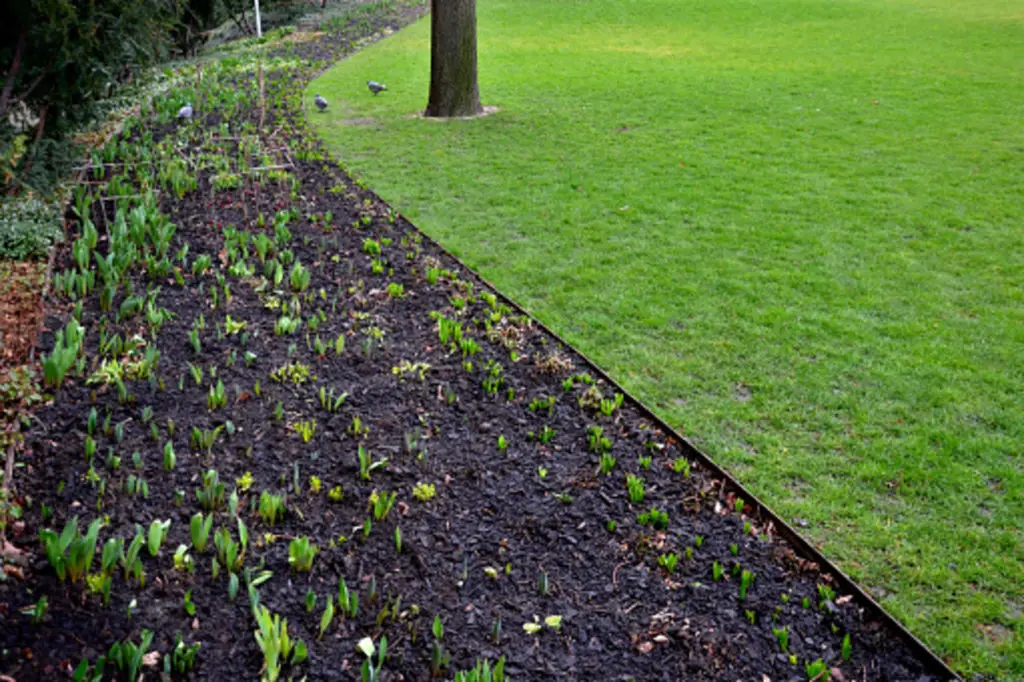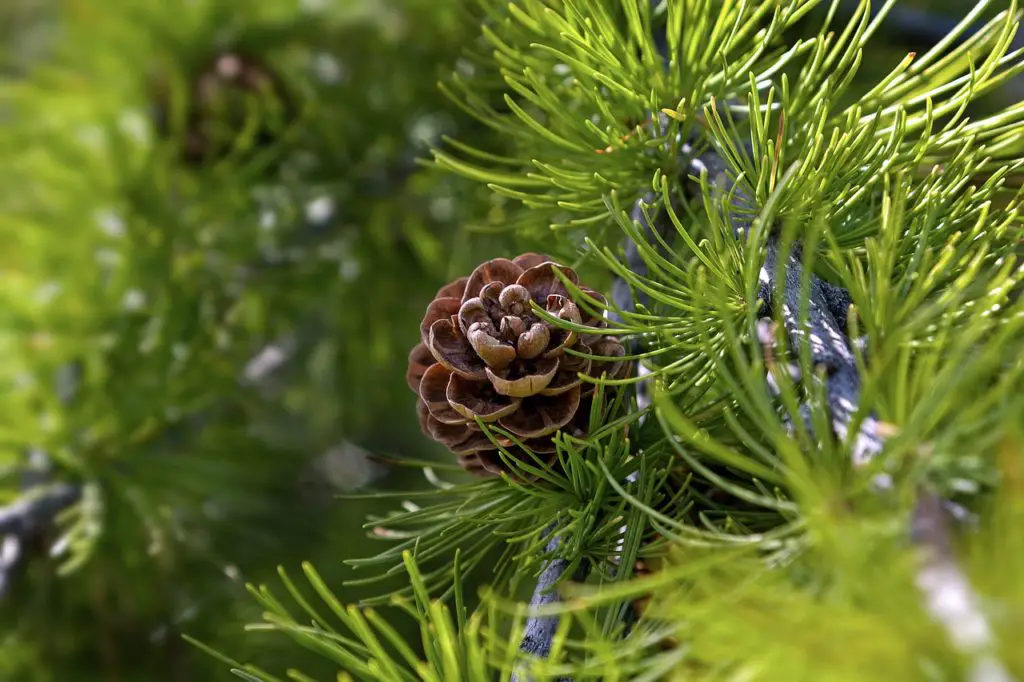Gardening is a therapeutic activity. It also improves the aesthetic appeal of the landscape. However, it can be stressful if small actions such as edging have to be repeated.
Edging is landscaping your garden to define a border between it and the rest of your lawn space. So, how long does rubber edging last? It depends on the kind of rubber chosen and the installation. You can make it last longer if you use high quality.
Some gardeners don’t like edging; some prefer to do framing every few weeks and don’t mind the labor and clean-up after the fact; all these options are okay.
However, if you’d like to continue experiencing gardening as a calming activity and keep the constant labor to a minimum, edging is a great option.
Read on for more details.
Also Check: How To Get Rid OF Flies In Mulch
How Long Does Rubber Edging Last
A professionally installed rubber edging lasts up to 20 years. This estimated time, of course, depends on the edging material. Rubber edging is lightweight and easy to install, meaning it is easy to keep in place and lasts longer.
What to Consider For a Lasting Rubber Edging
Type of Rubber Edging
Knowing more about rubber edgings allows you to make a more informed decision on which one is the most appropriate for your lawn.
The rubber curb edging is designed to look like an L-shaped barrier. This design prevents you from accidentally mowing over it or hitting it as you walk along the edge. Also, this design fits the more securely into the ground, making it one of the longer-lasting picks.
Another notable design is the crumb rubber edging. This model is designed with a thick, uneven surface that makes it resistant to damage from weather and other accidental risks such as getting knocked off as you walk.
And finally, another excellent pick for lasting rubber edging is the flat roll rubber edging that looks like a flat roll.
Aside from it lasting longer than the two other models, it’s designed to prevent weed growth from either side of the garden or lawn from invading the other underneath it. This rubber edging can also be used as a groundcover for your plants.
How Do You Secure Rubber Edging?
You’ll only be able to secure rubber edging if you’ve bought the correct set for your garden. This means buying one that’s the right width and height for the barrier you’ll want to dig.
Moreover, the edgings are either hammer in types or roll-ins. The main difference between the two is that the hammer-in type requires a hammer or mullet to secure it into the ground during installations, while the roll-ins need you to unroll and fit its length onto the dug trench.
While the roll-ins are easier to work with, choose the hammer-in model for a more secure edging since you’ll be more concerned with how long your rubber edging will last.
Additionally, buy both models of rubber edging rolled up, and while working with it, try to hold this coiled form. To have it secure in your garden, install it on a hot day to make it more malleable while you’re installing.
Upon purchase, leave it in the sun for about two hours to make it less coiled, then proceed to install.
Installing Lawn Rubber Edging
To install rubber edging, you’ll need a spade to cut the edges of your garden vertically, creating a distinct barrier between the landscape and the farm. The height of this barrier is essential; it’ll determine if the rubber edging will be secure because lawn grass typically grows underneath these barriers and in the garden if the border isn’t good enough.
Go for 5 to 6 inches wide rubber edging. While the models are harder to find, scavenging the market for them is best because it eliminates grass rhizomes from growing into the farm after you’ve secured a barrier.
To begin, press the spade into the earth to dig vertically or push forward an appropriate amount of soil depending on the width and length of the rubber edging. The trench you’re digging should be about 45°angle.
Then, uncoil the rubber edging and press it against the barrier; ensure the top of the border is about ½ an inch above the ground to prevent it from getting hit by a lawnmower while you’re landscaping. ½ an inch is also high enough to avoid overgrown grass from invading the garden upon installation of the edging.
Next, secure the wall to ensure it doesn’t collapse over time. Collapsing is more possible if you live in predominantly cold areas.
Some rubber edgings come with grooves or projections that securely hold the soil around the trench, meaning you won’t have to add any protection to the canal. In case your model doesn’t have these additions, use stakes. Fit them all across the rubber edging using a mullet. The hammering process drives it deeper into the trench and holds the soil against frost heave.
Additionally, while some edgings come with stakes, they aren’t usually enough to cover their length. An easy fix is to purchase 6-inch nails and hammer them horizontally into the rubber edging after every 30 cm or whichever measurement is appropriate for you.
How Do You Use Rubber Edging?
You use rubber edging to line the barrier between your garden and landscape. It’s a landscaping tool that helps separate these two spaces of your lawn. It’s fitted into the ground after digging a reasonable trench size.
The rubber edging is then lined against the trench, pressing upon the soil, and using nails or stakes, the edging is firmly fixed into the ground to prevent collapse in case of harsh weather.
How Can I Make My Rubber Edge Last?
You can make rubber edging last from the initial time of installation by trimming the grass growing around the edging. Letting grass grow underneath your edging raises it slowly from the ground and loosens it.
It’ll collapse on you if you don’t use stakes or nails to fasten the edges. Also, avoid placing high pressure on the soil near the trench while mowing the lawn. Consider using a slasher instead of a lawnmower to cut the grass around the channel.
While digging your trench, please also ensure you’ve chosen an appropriate acute angle. This helps support the soil, so it doesn’t lean heavily into the rubber edging. It’ll bend and break if this happens since it’s exposed to the sun that expands it.
Does Rubber Edging Last?
Yes, rubber edging lasts if used as a barrier on your lawn. With proper installation, it can last up to 20 years. Due to its malleable nature, you’ll be able to work it into any trench angle dug on your lawn and fit it securely for longer-lasting edging, unlike other materials.
They also come in different varieties. Some are single pieces, meaning one rubber edging is unrolled into the entirety of the trench length, while others come disjointed with little steaks to secure each segment to each other.
These varied designs add to the edging’s probability of lasting longer. If you live in areas where the weather changes the land either through erosion or weathering, you’ll need flexible edging like rubber edgings.
Frequently Asked Questions (FAQs)
What Material is Best for Edging?
The best material for edging is rubber edges. They are cheap, easily accessible, and malleable. They are also easy to install.
The best rubber edging to use, therefore, is the flat roll model. It’s aesthetically pleasing and works well in preventing weeds from growing onto the landscape.
Is Edging Necessary for Landscaping?
Yes, it’s necessary to edge your landscape. It protects both your landscape and your garden from weeds.
Edging creates a root barrier that stops weeds from invading the terrain and grass growing into the garden.
How Do You Dig a Trench For Plastic Edging?
You dig a trench of plastic edging by cleaning the area you want to dig and removing any fallen leaves and grown grass. Then, using chalk or string, outline the length you want to dig.
Choose a piece of appropriate digging equipment and start making the trench.
Dig inward towards the garden bed to avoid breaking into the soil too much. This helps the bed hold well even before the rubber edging is placed. The depth you dig depends on the model of rubber edging you’ve picked.
Is Rubber Edging Any Good?
Yes, rubber edges are good. It’s the most affordable and comes in various models and colors. It’s also the most practical edging solution available.
Additionally, it works well in preventing the spread of weeds from one section of the lawn to another.
Parting Point
Rubber edging is an excellent option for landscaping your lawn. It’s viable for both gardens, home farms, and flowerbeds. It also comes in various colors, models, and prices, and it’s straightforward to install.
While some people don’t see the need to place edging around their lawns, if you’ve been looking for a rubber edging that lasts, the list here includes three of the top models that’ll deliver effective results and, with proper installation, last for years.
These edgings are also mostly made of recycled materials. That’s great for the environment and is resistant to cold and heat.


